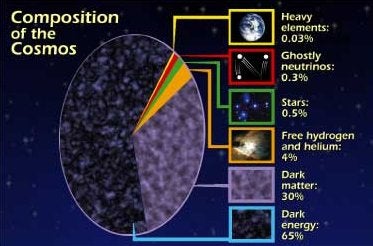If there is a phantom in physics, then the neutrino is it. The nuclear fires of the stars form these subatomic particles by the trillions every second, yet neutrinos stream unperturbed through the cosmos at nearly the speed of light, their passage through planets and people almost entirely unnoticed.
During the past decade, particle physicists have devised experiments that reveal the neutrino is a bit more substantial than previously thought. Over the same period, astronomers have found that the expansion of the universe is accelerating and that the bulk of energy in the cosmos is “dark energy” of an undetermined nature. Could all these things be linked?
A trio of University of Washington physicists thinks they are. The missing piece of the puzzle, says physicist Ann Nelson and her team, is an as-yet-undiscovered subatomic particle they call the “acceleron.”
In the team’s scenario, accelerons interact with and influence neutrinos through a new force. In an expanding universe, this new force results in a tension that fuels faster expansion. The physicists argue that both accelerons and neutrinos are components of dark energy. Dark energy now accounts for more than 65 percent of the energy of the universe, but in the early days of the cosmos, it barely registered.
“There are many models of dark energy, but the tests are mostly limited to cosmology, in particular measuring the rate of expansion of the universe. Because this involves observing very distant objects, it is very difficult to make such a measurement precisely,” Nelson says. “This is the only model that gives us some meaningful way to do experiments on Earth to find the force that gives rise to dark energy.”
Another peculiarity of the neutrino is that its mass can change according to the environment through which it is passing. In Nelson’s view, eventually neutrinos would get too far apart and become too massive to fuel cosmic acceleration. “The universe could continue to expand,” she says, “but at an ever-decreasing rate.”
Nelson and coworkers David Kaplan and Neal Weiner detail their arguments in a paper to appear in a forthcoming issue of Physical Review Letters.











